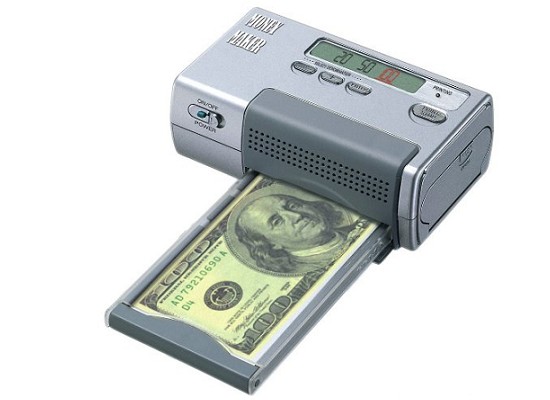- Joined
- Apr 26, 2011
- Messages
- 13,051
- Points
- 113
http://webofdebt.wordpress.com/2012...year-old-money-reformer-tops-a-million-views/
12-year-old Victoria Grant's message was that private central and commercial banks create money “out of thin air” and lend it to people and governments at interest. If governments issued their own money, they would save a lot of money for the taxpayers.
Her own country of Canada did this from 1939 to 1974. During that time, the government’s debt was low and sustainable, and it funded all sorts of remarkable things. When Canada switched to borrowing privately, it acquire a crippling national debt as it sold bonds at interest up to 22%.
Victoria quoted Graham Towers, head of the Bank of Canada :
''Each and every time a bank makes a loan, new bank credit is created — new deposits — brand new money. Broadly speaking, all new money comes out of a Bank in the form of loans. As loans are debts, then under the present system all money is debt.''
“If Parliament wants to change the form of operating the banking system, then certainly that is within the power of Parliament.”
“If the Canadian government needs money, they can borrow it directly from the Bank of Canada. The people would then pay fair taxes to repay the Bank of Canada. This tax money would in turn get injected back into the economic infrastructure and the debt would be wiped out. Canadians would again prosper with real money as the foundation of our economic structure and not debt money. Regarding the debt money owed to the private banks such as the Royal Bank, we would simply have the Bank of Canada print the money owing, hand it over to the private banks, and then clear the debt to the Bank of Canada.”
The Canadian government’s own Auditor General noted in his annual report that 91% of the debt consists of compounded interest charges. Subtract those and the government would have a debt of only C$37 billion, very low and sustainable, just as it was before 1974.
12-year-old Victoria Grant's message was that private central and commercial banks create money “out of thin air” and lend it to people and governments at interest. If governments issued their own money, they would save a lot of money for the taxpayers.
Her own country of Canada did this from 1939 to 1974. During that time, the government’s debt was low and sustainable, and it funded all sorts of remarkable things. When Canada switched to borrowing privately, it acquire a crippling national debt as it sold bonds at interest up to 22%.
Victoria quoted Graham Towers, head of the Bank of Canada :
''Each and every time a bank makes a loan, new bank credit is created — new deposits — brand new money. Broadly speaking, all new money comes out of a Bank in the form of loans. As loans are debts, then under the present system all money is debt.''
“If Parliament wants to change the form of operating the banking system, then certainly that is within the power of Parliament.”
“If the Canadian government needs money, they can borrow it directly from the Bank of Canada. The people would then pay fair taxes to repay the Bank of Canada. This tax money would in turn get injected back into the economic infrastructure and the debt would be wiped out. Canadians would again prosper with real money as the foundation of our economic structure and not debt money. Regarding the debt money owed to the private banks such as the Royal Bank, we would simply have the Bank of Canada print the money owing, hand it over to the private banks, and then clear the debt to the Bank of Canada.”
The Canadian government’s own Auditor General noted in his annual report that 91% of the debt consists of compounded interest charges. Subtract those and the government would have a debt of only C$37 billion, very low and sustainable, just as it was before 1974.

